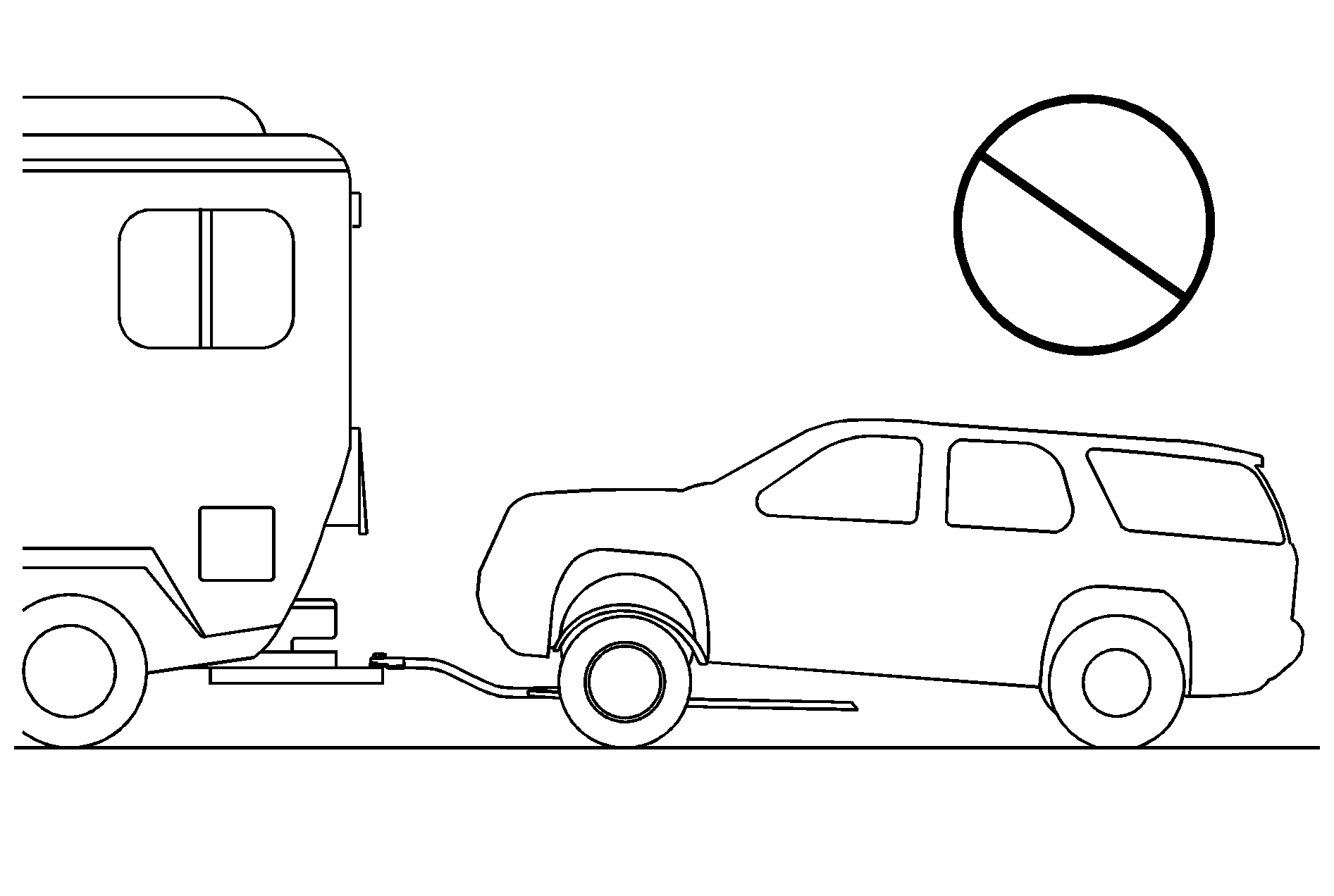Recreational vehicle towing means towing the vehicle behind another vehicle - such as behind a motorhome. The two most common types of recreational vehicle towing are known as dinghy towing and dolly towing. Dinghy towing is towing the vehicle with all four wheels on the ground. Dolly towing is towing the vehicle with two wheels on the ground and two wheels up on a device known as a dolly.
Here are some important things to consider before recreational vehicle towing:
| • | What is the towing capacity of the towing vehicle? Be sure to read the tow vehicle manufacturer's recommendations. |
| • | What is the distance that will be travelled? Some vehicles have restrictions on how far and how long they can tow. |
| • | Is the proper towing equipment going to be used? See your dealer/retailer or trailering professional for additional advice and equipment recommendations. |
| • | Is the vehicle ready to be towed? Just as preparing the vehicle for a long trip, make sure the vehicle is prepared to be towed. See Before Leaving on a Long Trip. |
Dinghy Towing

This full-time four-wheel-drive vehicle can be dinghy towed from the front. These vehicles can also be towed by placing them on a platform trailer with all four wheels off the ground. These vehicles cannot be towed using a dolly.
Use the following procedure to tow the vehicle:
- Shift the transmission to P (Park).
- Turn the engine off, but leave the ignition in ACC/ACCESSORY.
- Firmly set the parking brake.
- Securely attach the vehicle being towed to the tow vehicle.
- Shift the transfer case to N (Neutral). See Full-Time Four-Wheel Drive for the proper procedure to select the N (Neutral) position for the vehicle.
- Release the parking brake only after the vehicle being towed is firmly attached to the towing vehicle.
- Turn the ignition to ACC/ACCESSORY.
- Disconnect the battery if the vehicle will be towed for long distances or long periods of time.
Caution: Shifting a full-time four-wheel-drive vehicle's transfer case into N (Neutral) can cause the vehicle to roll even if the transmission is in P (Park). The driver or others could be injured. Make sure the parking brake is firmly set before the transfer case is shifted to N (Neutral).
When towing the vehicle for extended periods of time, start the vehicle as often as possible to prevent battery drain. This should only be done when the tow vehicle is parked.
Dolly Towing

The vehicle cannot be dolly towed. If the vehicle must be towed behind another vehicle, use the dinghy towing procedure explained previously.
Notice: Dolly towing the vehicle will damage drivetrain components. Do not dolly tow the vehicle.
